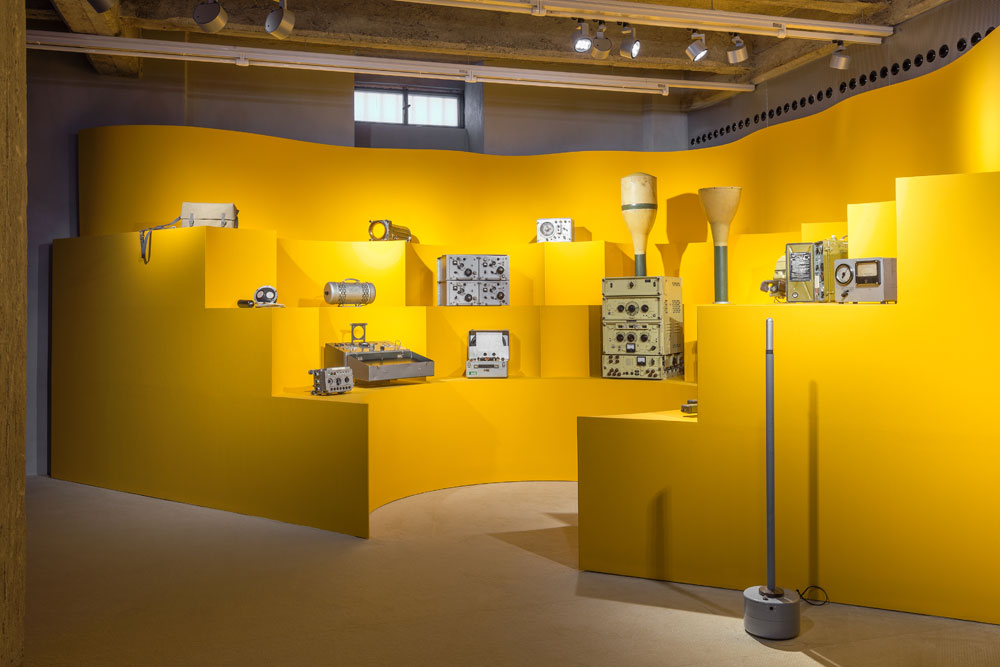Around Town: Milan
Thomas Demand, the FM Center for Contemporary Art and the changing landscape of Milan's art scene
Thomas Demand, the FM Center for Contemporary Art and the changing landscape of Milan's art scene

This year, the entrance to Milan’s Miart fair was overshadowed by the torqued silhouette of an unfinished tower. Designed by the late Zaha Hadid, it forms part of ‘CityLife’, a business and residential complex currently in development next to the Fiera Milano. Once finished, Hadid’s tower will stand alongside Arata Isozaki’s skyscraper, Italy’s tallest, and a giant tilted structure by Daniel Libeskind. At the foot of these buildings, a new sculpture park is planned (with 30 public artworks by, among others, Rossella Biscotti, Adelita Husni-Bey, Shilpa Gupta, Haroon Mirza, Marlie Mul, Amalia Pica and Wilfredo Prieto) provided that the city’s next mayor, to be elected in June, signs off on the ambitious plan. Amongst the park’s more surreal attractions is a golf course, set in the excavations for future residential buildings. These negative spaces also evoke a missing building, originally planned for the site: Milan’s long awaited, forever postponed and finally cancelled contemporary art museum. It’s an absence, however, around which the local art scene has congregated, triggered by private foundations, galleries, collections and sponsors. Fondazione Prada’s new headquarters, designed by Rem Koolhaas’s firm OMA, for example, will be finalized this summer with the completion of Torre, a new tower structure that will further expand their already substantial programme.

The latest show at Fondazione Prada is ‘L’image volée’ (The Stolen Image), curated by the artist Thomas Demand, which adds a new chapter to the foundation’s ongoing enquiry into questions concerning the original and the copy. Demand looks at the appropriation of images from three perspectives: theft, forgery and surveillance. His selection indulges in the pleasure of research, as well as in free associations and individual predilections, as if this were his own Mnemosyne Atlas (1924–29); as a result, the inclusion of two of his own pieces (Camera, 2007, and Vault, 2012) feels almost redundant. The first two sections of the exhibition (titled ‘Literally Stealing’ and ‘Iconographic Poaching’) share the same gallery space, merging with each other on the coloured walls of the exhibition architecture conceived by fellow Berlin-based artist Manfred Pernice. We move from the empty frame of Vincent van Gogh’s Portrait of Dr. Gachet (1890), confiscated by the Nazis from Frankfurt’s Städel Museum in 1937, to the video There Is a Criminal Touch to Art (1976), documenting how Ulay stole a Biedermeier painting from the Neue Nationalgalerie in Berlin and installed it in the house of a Kreuzberg-based Turkish family. Francis Bacon’s slashed canvases, portraits with the faces cut out, found in his studio after his death, lead to Sara Cwynar’s 72 Pictures of Modern Paintings (2016), in which fragments of Bacon’s paintings are turned into motifs for gaudy wallpaper. The third, thematically compact section, ‘Pictures That Steal’, which includes works by Omer Fast, Trevor Paglen and Christopher Williams, ends with a collection of Cold War-era Soviet and Eastern German spyware (curated by Anonymous) courtesy of the Wende Museum in Los Angeles – a display that feels simultaneously nostalgic and, given the escalation of online surveillance in recent years, timely.

On the opposite end of the curatorial spectrum – organized in a linear, chronological manner – is a remarkable group exhibition that debuted in a new venue, the FM (Frigoriferi Milanesi) Center for Contemporary Art. ‘L’Inarchiviabile’ (The Unarchivable), curated by Marco Scotini with Lorenzo Paini, covers two decades of Italian art practice, from the 1960s and ’70s, with a vast selection of works loaned from Italy’s main private collections. It was great to see, finally, a comprehensive and polyphonic take on the period rather than the usual zoom-in on arte povera’s well-known protagonists. My favourite works are all by female artists, who are so often absent from Italian art history: Carla Accardi’s fluorescent and candy-coloured Rotolo Arancio and Rotolo Verde (Orange Roll and Green Roll, both 1967), painted on sheets of rolled-up transparent plastic sheeting; Irma Blank’s Twelve Chapters (1977), 12 laboriously hand-written books filled with the artist’s elegant abstract signs, and Lisetta Carmi’s I Travestiti (Transvestites, 1965–71), a pioneering and much censored photographic project about the trans community in Genoa. I left pondering whether the exhibition’s title shouldn’t also be read as an implicit nod to how crucial it is, in fact, to archive, document and permanently exhibit otherwise suppressed collective memories.

At the new venue of the not-for-profit space Marsèlleria, Matteo Nasini gathered a midnight audience for a ‘sleep concert’, during which – with the help of a 16-channel, brain-computer interface system – the artist turned the sounds generated by the cerebral waves of a sleeping performer into music. With inflatable mats on the ground and a relaxed atmosphere, the event provided a welcome antidote to the accelerated pace of Milan’s fair week and its late-night crowds at Bar Basso. Finally, another new space should be added to the list: an underground cellar recently opened below the exhibition venue of Armada, a collective of young artists and curators located in the Bovisa area, at the northern edge of the city. Under the title ‘Where Wild Flowers Grow’, a dozen members of the Armada group exhibited new sculptures and paintings, united by a black mandala collectively painted on the dusty ground. For sure, it’s no Hadid-designed loft or spotless white cube but, sometimes, to encounter raw energy, we need to move beyond our comfort zones.





















